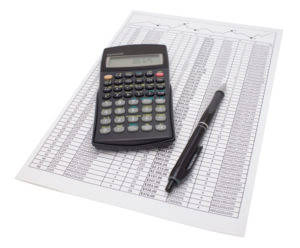
At all times, the employee responsible for petty cash is accountable for having cash and petty cash vouchers equal to the total amount of the fund. However, it should be replenished at the end of the accounting period in order to ensure that all expenses are properly recorded. One of the conveniences of the petty cash fund is that payments from the fund require no journal entries at the time of payment. Thus, using a petty cash fund avoids the need for making many entries for small amounts.

Which of these is most important for your financial advisor to have?
Over and Short may seem like a straightforward concept, but it can have a significant impact on the accuracy of financial records. By understanding the causes and taking appropriate measures to address discrepancies, businesses can ensure the integrity of their financial statements. Remember, accuracy is key when it comes to accounting, and by staying vigilant, you can minimize the occurrence of Over and Short situations in your organization.

How to Account for Credit Card Sales
Although it would be preferable if all disbursements were made by check and all receipts were deposited intact, most firms usually maintain a small amount of cash on hand for miscellaneous expenditures. When disbursing cash from the fund, the petty cash custodian prepares a petty cash voucher, which should be signed by the person receiving the funds. A petty cash voucher is a document or form that shows the amount of and reason for a petty cash disbursement. A petty cash voucher is a document or form that shows the amount of and reason for a petty cash disbursement.
Navigating the Disadvantages of Purchasing Processes (3 Points You Should Know
It’s an “other expense” for you, not a normal expense like paying your bills. Cash Over and Short acts as a Revenue account when there is an overage. It’s “other revenue” cash over and short account for you, not a normal source of revenue like your paycheck. Shaun Conrad is a Certified Public Accountant and CPA exam expert with a passion for teaching.
- A controller conducts a monthly review of a petty cash box that should contain a standard cash balance of $200.
- This may be the result of an employee not getting a receipt or getting back incorrect change from the store where the purchase was made.
- The account stores the amount by which the actual ending cash balance differs from the beginning book balance of cash on hand, plus or minus any recorded cash transactions during the period.
- The logical first step is to document the reimbursement, for example by writing out a receipt.
- This cash shortfall is recorded as a debit to the cash over and short account (which is an expense) and a credit to the petty cash or cash account (which is an asset reduction).
- Assume the same situation except that I receive $94 instead of $96 for the sale.
- As mentioned above, the sales staff or cashier can give too much or too little change to the customer.
Journalizing Petty Cash Transactions
The journal entry to record replenishing the fund would debit the various accounts indicated by the summary and credit Cash. Sometimes, the petty cash custodian makes errors in making change from the fund or doesn’t receive correct amounts back from users. These errors cause the cash in the fund to be more or less than the amount of the fund less the total vouchers. When the fund is replenished, the credit to Cash is for the difference between the established amount and the actual cash in the fund. Any discrepancy should be debited or credited to an account called Cash Over and Short. The Cash Over and Short account can be either an expense (short) or a revenue (over), depending on whether it has a debit or credit balance.
Over and Short: Definition and What It Means in Accounting
Accounting is all about accuracy and ensuring that financial records are a true reflection of a company’s financial position. However, discrepancies occasionally occur, leading to differences between the recorded amount and the count of cash or inventory in hand. Learn the definition of « over and short » in finance and understand its implications in accounting.
Petty Cash Journal Entries
- At Finance Strategists, we partner with financial experts to ensure the accuracy of our financial content.
- If, for example, management of the Galaxy’s Best Yogurt decides to increase the petty cash balance to $100 from the current balance of $75, the journal entry to do this on August 1 would be as follows.
- This term pertains primarily to cash-intensive businesses in the retail and banking sectors, as well as those that need to handle petty cash.
- Upon review of the box, the balance is counted in the following way.
- Sometimes the petty cash custodian makes errors in making change from the fund or doesn’t receive correct amounts back from users.
- The journal entry to record replenishing the fund would debit the various accounts indicated by the summary and credit Cash.
Arindam Sandilya, co-head of global FX strategy at the bank, told Bloomberg TV that the process of rejigging financial assets was « not done by any stretch ». For example, when you sell $100 worth of merchandise to customer « a », debit sales for $100 and credit cash for $100. Financial accountants (and independent auditors) are generally not concerned with petty cash because of the immateriality of the amounts. As you think back on this system, note that there are several internal controls in place, most notably segregation of duties, assignment of responsibility, and a reconciliation (monitoring) process. In the next section, we’ll look at one of the most important cash controls, the bank reconciliation process, in detail.


Only when the fund is reimbursed, or when the end of the accounting period arrives, does the firm make an entry in the journal. Calculate the sum of the petty cash account’s vouchers you created during the accounting period to determine how much cash you distributed during the accounting period. In the example, if you have $300 in vouchers for office supplies and $140 for transportation expense, add $300 to $140 to get $440 in total vouchers created during the period. A cash short journal entry records any discrepancies between the amount of cash expected in your business’s accounts and the amount actually present. When there is a cash shortage, it is treated as an expense; thus we recorded on debit. In contrast, when there is an overage, it is treated as income; thus we recorded on credit.
To permit these cash disbursements and still maintain adequate control over cash, companies frequently establish a petty cash fund of a round figure such as $100 or $500. The petty cash account is a current asset and will have a normal debit balance (debit to increase and credit to decrease). Here is a video of the petty cash process and then we will review the steps in detail. To permit these cash disbursements and still maintain adequate control over cash, companies frequently establish a petty cash fund of a round figure such as $100 or $500. Typically, petty cash accounts are reimbursed at a fixed time period.